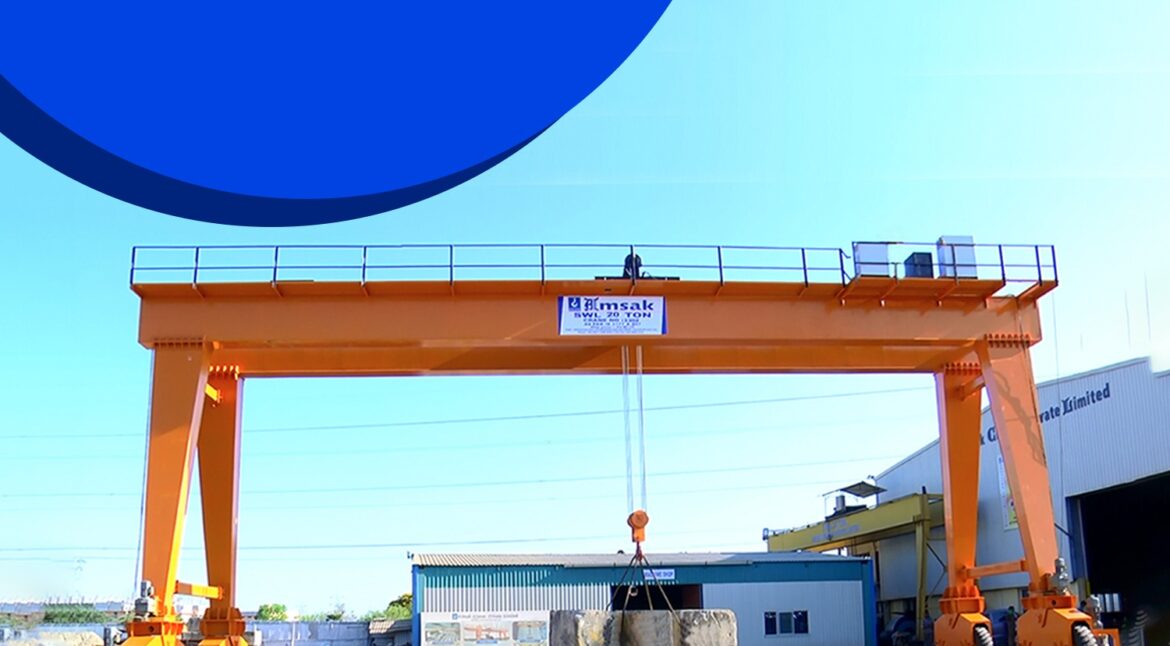Rubber Tyre Gantry Crane operating in a busy container yard
Introduction
In today’s fast-paced maritime trade, efficiency isn’t just important—it’s the lifeline of the industry. Ships arrive with thousands of containers daily, and ports must keep up with rapid loading and unloading. That’s where Rubber Tyre Gantry Cranes (RTGs) come into play. These advanced cranes are reshaping how ports operate, cutting costs, reducing delays, and pushing productivity to new heights.
The Evolution of Cargo Handling
Decades ago, ports relied heavily on manual labour and basic lifting equipment. While it got the job done, it was painfully slow and expensive. Long queues of vessels waiting to dock, congested terminals, and high operational costs plagued the shipping industry. This inefficiency forced a revolution: automation and mechanization.
Introduction to Rubber Tyre Gantry Cranes (RTG)
So, what exactly is an RTG?
Unlike traditional gantry cranes that run on fixed rails, RTGs are mounted on rubber tyres. This design provides them with unmatched mobility, allowing them to move freely around container yards. Think of them as agile giants—capable of handling massive loads while effortlessly navigating complex port layouts.
Design and Structure of RTG
RTGs are designed with practicality in mind:
-
Rubber Tyres: The tyres eliminate the need for fixed rails, making movement smoother and more adaptable.
-
Mobility: Operators can drive RTGs across the container yard, accessing different stacks easily.
-
Strong Frame: Built to withstand heavy container loads, they maintain stability while offering flexibility.
Key Features of RTGs
-
Rubber Tyres for Mobility: They move around without restrictions, unlike rail-mounted systems.
-
Electric Power Systems: Many modern RTGs run on electricity, reducing fuel usage and emissions.
-
Telescopic Spreader: Designed to handle containers of varying sizes with precision.
-
Advanced Control Systems: Operators manage everything from a centralized control room using smart software.
Advantages of Using RTGs
-
Flexibility: Perfect for congested yards, RTGs can maneuver around obstacles with ease.
-
Productivity: Capable of moving large volumes quickly, boosting terminal throughput.
-
Cost-Effectiveness: Though the upfront cost is high, long-term savings on operations and maintenance make them worth it.
-
Safety: Equipped with modern safety features that minimize risks in busy terminals.
RTGs and Environmental Sustainability
Ports are under pressure to reduce carbon footprints. Electric-powered RTGs are a step in the right direction:
-
Lower emissions compared to diesel-powered equipment
-
Reduced noise pollution
-
Energy-efficient operations promoting green initiatives
RTG vs. Rail-Mounted Gantry Cranes (RMGs)
-
Mobility: RTGs win hands down with their tyre-based movement.
-
Operational Costs: RMGs require expensive rail setups, while RTGs are more flexible.
-
Space Utilization: RTGs can adapt to changing layouts, while RMGs are fixed in place.
Applications of RTGs in Global Ports
From Singapore to Rotterdam, leading ports worldwide are deploying RTGs. They’ve proven their worth in:
-
Speeding up container handling
-
Reducing vessel waiting times
-
Streamlining terminal operations
Automation and Digital Integration
Modern RTGs aren’t just cranes—they’re smart machines. With AI and machine learning, they can:
-
Predict the most efficient stacking patterns
-
Optimize movement for reduced energy usage
-
Allow remote operation for better safety
Safety Features in RTGs
-
Anti-Collision Systems to prevent accidents
-
Enhanced Operator Cabins with wide visibility
-
Emergency Stop Functions for quick response
Economic Impact of RTGs
Every minute saved in container handling equals money saved. RTGs bring:
-
Faster turnaround times
-
Reduced labour costs
-
Higher efficiency leading to trade growth
Future Trends in RTG Technology
The future is even more exciting:
-
Hydrogen Fuel Cells could replace traditional power sources
-
AI-driven Operations for better container stacking
-
Integration with Smart Ports, making logistics seamless
Why Amsak Cranes RTGs Stand Out
At Amsak Cranes, RTGs are more than just machines—they’re innovations built for the future. With over 50 years of expertise, Amsak’s cranes are trusted worldwide for their efficiency, durability, and reliability.
Conclusion
Rubber Tyre Gantry Cranes aren’t just another piece of equipment—they’re the backbone of modern port operations. With their flexibility, sustainability, and advanced features, they’ve become the go-to choice for ports looking to stay ahead in global trade. As technology evolves, RTGs will continue to play a vital role in shaping the future of maritime logistics.



